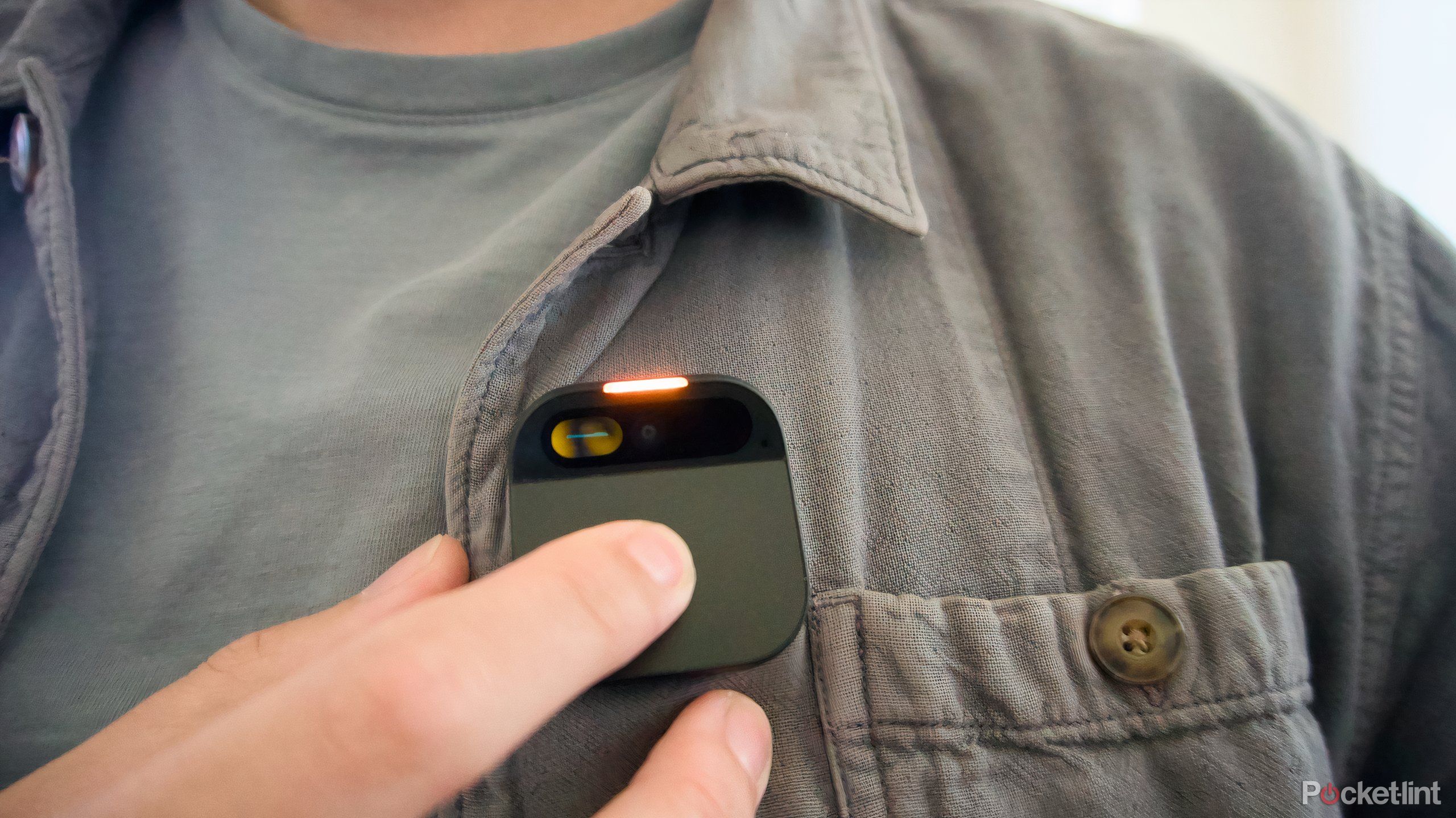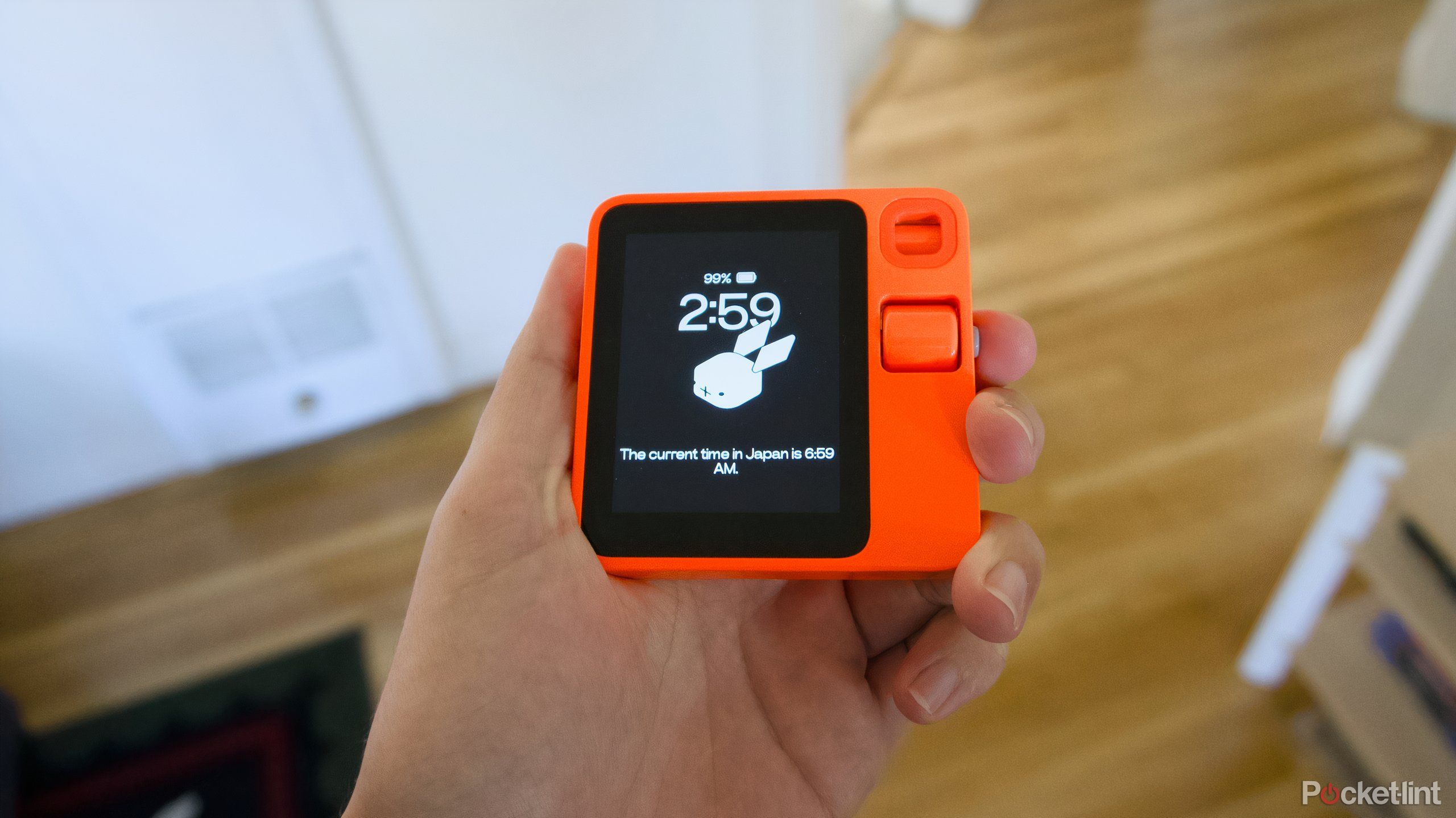Key Takeaways
- Jony Ive & Sam Altman are collaborating on a mysterious AI hardware project under LoveFrom.
- Unfortunately, design isn’t really the problem with AI hardware, based on the Humane AI Pin and Rabbit R1.
- The focus should be on AI’s capabilities not how devices look.
Some of Apple’s most important products were designed, or at least overseen, by Jony Ive. Devices like the iPhone or Apple Watch have become integral parts of people’s lives, and critically, Apple’s business. Their success is often credited to how they look and work — Ive and the team he built over decades at Apple have a particular knack for making things that are beautiful, but approachable. It’s not all surprising that there would be a tremendous amount of interest in the idea of the storied designer creating AI hardware.
A 2023 report from The Information suggested that Ive and Sam Altman, the CEO of OpenAI, were exploring building some kind of AI hardware, and in a profile of Ive, The New York Times was able to confirm that the collaboration is real, and Ive’s design firm LoveFrom is handling the project. The details of what this device might look like are still vague, but what it ultimately is won’t matter.
As the limitations of generative AI have become increasingly clear, and companies like Humane and Rabbit have thrown eye-catching designs after still inaccurate AI models, I’m less convinced design is what’s getting in the way of post-smartphone hardware from succeeding. It’s not clear Jony Ive was the missing ingredient.
What we know about Ive and Altman’s AI hardware project
Altman has invested in personal AI hardware before
The Information’s original report doesn’t offer many details as to what kind of device Ive and Altman are hoping to build other than the pair are looking to figure out what “new hardware for the AI age could look like.” LoveFrom’s track record is varied enough at this point — covering everything from a touchscreen interface for an electric Ferrari to a Moncler jackets with magnetic buttons — that we can’t use the company’s output as a guide to what Ive’s AI hardware might look like.
The Times’ report does offer a few more clues, however. Whatever LoveFrom is designing “uses A.I. to create a computing experience that is less socially disruptive than the iPhone.” That jives with Altman’s own investment in Humane. The Humane AI Pin, a pin-shaped, AI-powered phone alternative that uses models from OpenAI and Google to answer questions, identify objects, and handle a variety of smartphone tasks, is explicitly designed to be voice-first and screenless.
Whatever LoveFrom is designing is ‘uses A.I. to create a computing experience that is less socially disruptive than the iPhone.’
The wearable includes a projector that creates an interface you can interact with on your hand (though it’s not bright enough to always use comfortably in direct sunlight), but it works best by just talking with the Pin directly. Considering OpenAI’s focus on voice features as of late, it wouldn’t be surprising if this Ive-designed hardware put less of an emphasis on screens, too.
The problem isn’t design, it’s AI
Ex-Apple designers and Teenage Engineering haven’t cracked it
The thing is, regardless of how good the design is, the track record for AI hardware isn’t particularly good. Once you look past the dozens of devices that are essentially microphones attached to transcription software (a useful enough tool in its way), what an AI gadget is actually good for is really hard to say.
The Humane AI Pin and the Rabbit R1 are the easiest to point to because they’ve been some of the most prominent failures. Both devices have been plagued by incorrect or unreliable answers from their AI assistants, along with a mix of poor battery life, missing features, and in the case of Rabbit, serious security concerns. It’s not a convincing case that these are the form factors to replace a smartphone or a smartwatch.
Both the AI Pin and R1 have been updated since launch and now mostly work, if not entirely as originally advertised, but neither has been the revolutionary smartphone alternative they were sold as. Making hardware as a startup is hard, but it’s hard to understate the talent that was thrown at these devices. Humane is staffed with ex-Apple designers and engineers who should be able to create a compelling piece of hardware (the look of the Pin and the work to miniaturize its laser projector is at least impressive). Rabbit partnered with Teenage Engineering to build the R1, a Swedish design firm known for its stylish audio hardware and quirky contract work like the Playdate.
Both of these companies were set up for success, and arguably had everything in terms of design working in their favor, and still stumbled out of the block. Can we really say it’s how these devices look or work that’s the problem? It’s AI.
We’re still years away from AI being a true computer replacement
AI might be do-it-all software — emphasis on “might”
We are basically two years into large language models (the technology that powers chatbots like Gemini or ChatGPT) being in a state that the companies building them believe they’re ready for public consumption, and that’s still with dozens of compromises, spanning their limited use to the constant need to warn users of their inaccuracies. Not only do these tools seem to only organize and summarize existing information reliably, every response is delivered alongside an explicit or implicit warning that you can’t trust what you’re reading.
The bleak current realities of generative AI don’t even take into account that many AI companies believe at some point they’ll create AGI, or artificial general intelligence, that will be as smart as a human mind — with little evidence to suggest that is possible.
Every suggestion from the companies building these models is that they might not ever be fully error-free, and the path to getting there — both affording to run these models as they exist and finding material to train future versions — is going to be incredibly expensive, resource-intensive, and environmentally destructive. At this point, design isn’t really the problem, it’s the AI features the design delivers that are holding things up. We’re many years away from the collaboration between Altman and Ive bearing fruit, but it should be clear now that project alone isn’t notable.
If a good design couldn’t sell previous AI hardware, there’s no reason to think Ive and LoveFrom’s skills will make a difference. They won’t hurt, certainly, but everyone should be paying more attention to the companies powering the current functionality of these devices, rather than how they look.






